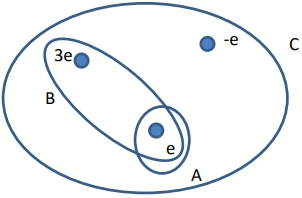Gauss's Law is a fundamental principle in electricity that establishes a direct relationship between electric flux and charge. It states that the net electric flux through a closed surface is proportional to the total charge enclosed within that surface. This relationship can be expressed mathematically as:
\[\Phi_{\text{net}} = \frac{Q_{\text{enclosed}}}{\varepsilon_0}\]
Here, \[\Phi_{\text{net}}\] represents the net electric flux, \[Q_{\text{enclosed}}\] is the total charge within the closed surface, and \[\varepsilon_0\] (epsilon naught) is the permittivity of free space, approximately equal to \[8.85 \times 10^{-12} \, \text{C}^2/\text{N} \cdot \text{m}^2\].
To apply Gauss's Law effectively, it is essential to understand the three main types of problems that can arise:
1. **Calculating Flux from Charge**: When given a set of charges, you can determine the net flux through a surface by summing the enclosed charges. For example, if you have a positive charge of 5 C and a negative charge of 3 C within a closed surface, the total enclosed charge is 2 C. Using Gauss's Law, the net flux can be calculated as:
\[\Phi_{\text{net}} = \frac{2 \, \text{C}}{8.85 \times 10^{-12} \, \text{C}^2/\text{N} \cdot \text{m}^2} \approx 2.26 \times 10^{11} \, \text{N} \cdot \text{m}^2/\text{C}\]
2. **Finding Charge from Flux**: In some scenarios, you may be provided with the net flux and asked to find the enclosed charge. For instance, if the net flux through a closed surface is 23 N·m²/C, you can rearrange Gauss's Law to solve for the enclosed charge:
\[Q_{\text{enclosed}} = \Phi_{\text{net}} \cdot \varepsilon_0\]
By substituting the values, you can determine the total charge within the surface.
3. **Calculating Electric Field from Charge**: When tasked with finding the electric field due to a point charge, Gauss's Law can also be utilized. The electric field (E) at a distance (R) from a point charge can be derived by selecting an appropriate Gaussian surface, typically a sphere for point charges. The electric field can be expressed as:
\[E = \frac{Q_{\text{enclosed}}}{4 \pi R^2 \varepsilon_0}\]
Recognizing that \[\frac{1}{4 \pi \varepsilon_0}\] is the constant K, the equation simplifies to:
\[E = K \frac{Q_{\text{enclosed}}}{R^2}\]
This confirms the established formula for the electric field around a point charge, demonstrating the utility of Gauss's Law in various contexts.
Understanding Gauss's Law and its applications is crucial for solving problems related to electric fields and flux, providing a powerful tool for analyzing electrostatic situations.



